Delhi has always been a great city city for shopping. Famous for its marketplaces, the retail scene is being reinvented by designers who want to change how people shop and express themselves.
Smack in the centre of India’s north-central plains, the capital city was for centuries a bustling junction on transcontinental trade routes. A parade of dynasties flocked here, razing and rebuilding the city, leaving behind staggering architecture and a legacy of opulence. The city’s myriad marketplaces also thrived, piled high with textiles, spices, gold and ceramics from far-flung lands and packed with artisan guilds whose handiwork adorned everything from clothes and jewellery to crafts.
Markets and shopping remain an important focus in the city today, be it the overwhelming alleys of Chandni Chowk, the sprawling fabric, sundries and gold shops of Lajpat Nagar or the millennial-friendly haunts of Hauz Khas. But that’s not to say the retail scene hasn’t changed.
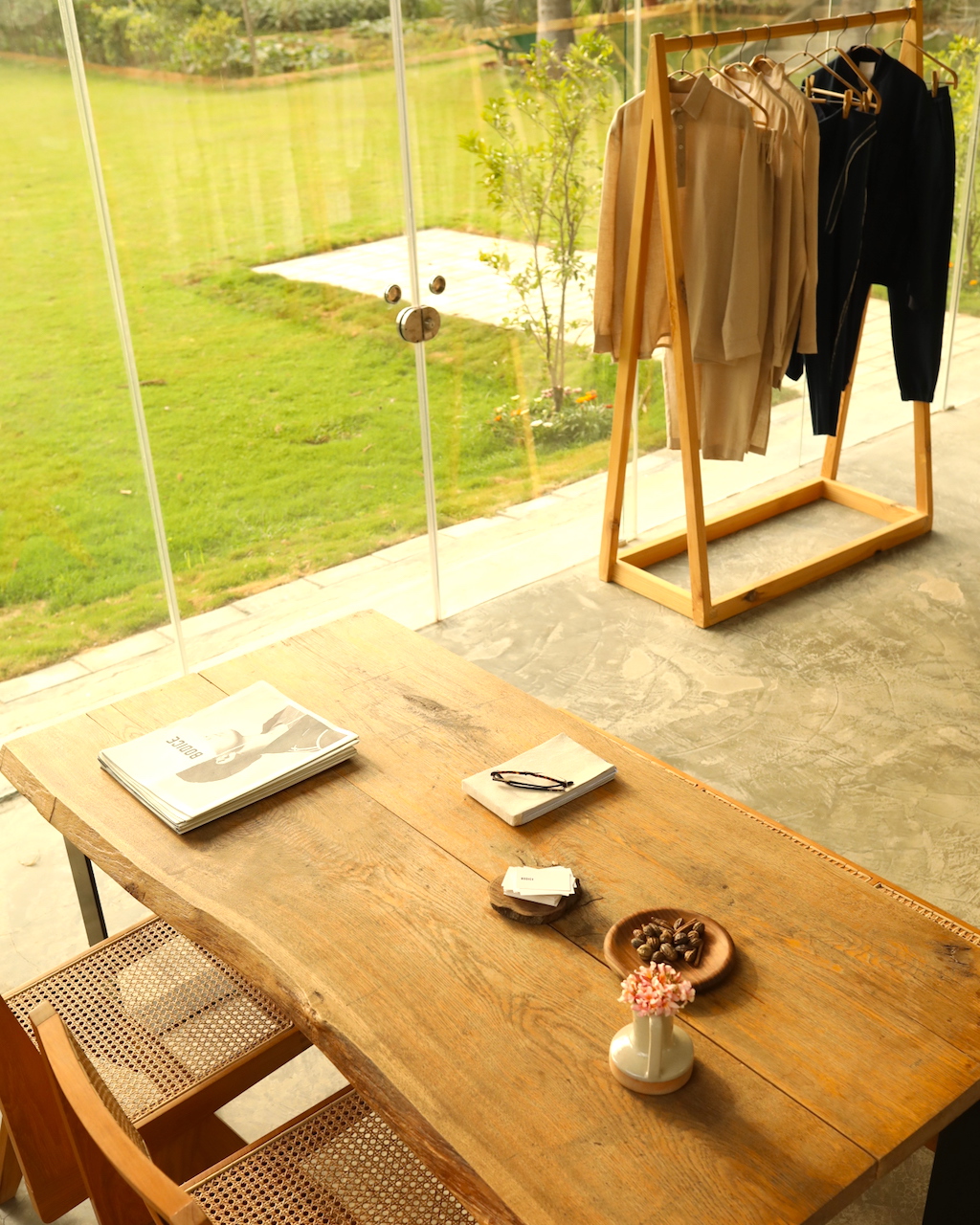
Beginning in the mid-1980s, commercial hubs such as Khan Market, Meharchand Market and Greater Kailash began introducing air-conditioned spaces to cater to a growing base of middle-class shoppers in search of ready-to-wear fashion and boutique labels. What remained the same, though, is Delhi’s devotion to following Bollywood trends and status consciousness.
But now, a new breed of designers is reinventing the wheel – turning shopping from a purely transactional process to a design-centric experience where people can meaningfully connect. More than that, though, their thoughtful mix of beautiful spaces, envelope-pushing Indian fashion and curated events is fostering an unprecedented experimentation with personal style.
We visit four of the pioneers behind this fashion revolution in the metropolis.
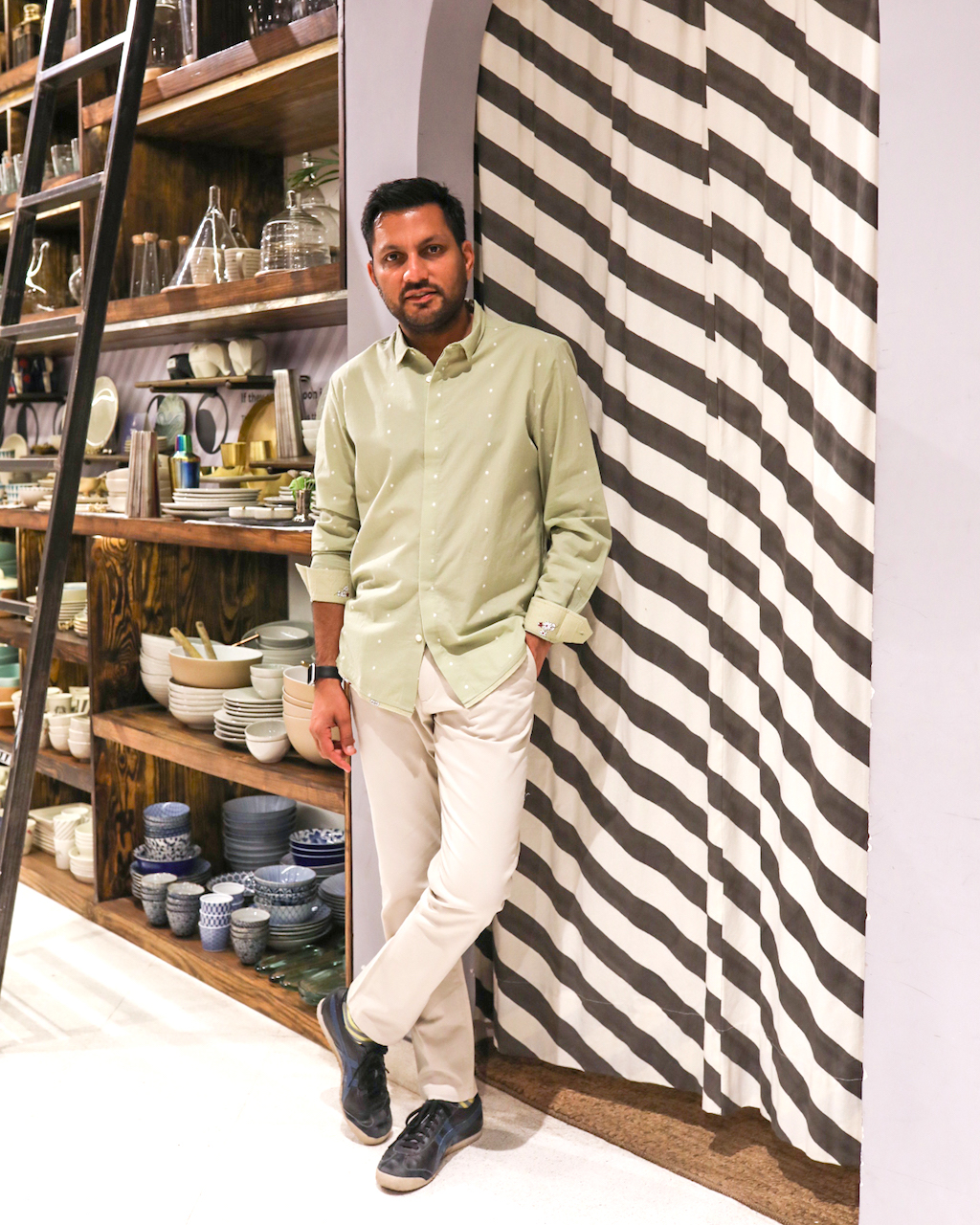
Designer Raul Rai offers an ode to tropical modernism
Perched atop The Chanakya, a high-end indoor market adjacent to the architecturally rich Lutyens’ Delhi, Nicobar’s frond-filled interiors are an ode to Tropical Modernism. Muslin tunics and organic bamboo fibre knits swing from driftwood beams. Wood and brass spice boxes, earthy ceramics and clay kulhads for serving chai channel a rustic vibe. At in-store café NicoCaara, baristas whip up chai lattes while barkeeps pour sangria margaritas.
Launched in 2016 by Raul Rai and his wife Simran Lal, Nicobar delivers timeless silhouettes that work equally well on the beach and in the city. But through its in-store experiences, it does much more than that.
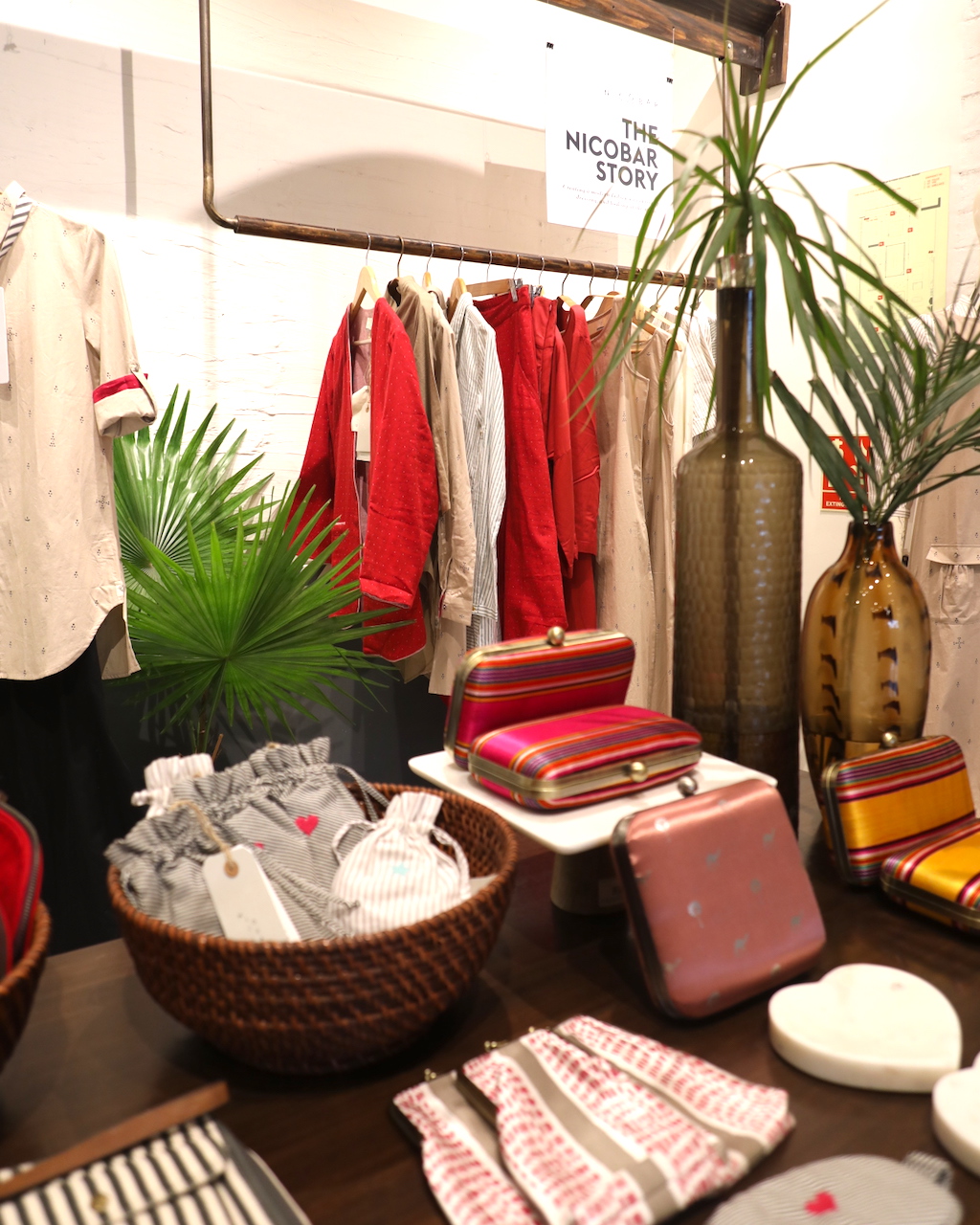
“In India, questioning lifestyle and the state of being was unheard of five or 10 years ago, but this drives how we think about our space, our design process and our story,” explains Rai. “The dot-com boom occurred 10 years ago [in India], and millennials are looking for new ways to think and create an impact. Our business model takes all this into account.”
The store layout is inspired by a haveli, a traditional Indian house arranged around a central garden. This design facilitates the movement of people as well as the myriad of cultural experiences on offer here. Shoppers picking up a linen pinstripe kurta (tunic) or organic cotton trousers may discover a Nico Talk, a monthly series covering topics such as mindful eating and recycling (the brand recently eliminated all plastic from its shipping and packaging). A recent pop-up here bringing together iconic motorcycle maker Royal Enfield, Goa-based start-up gin Greater Than and natural skincare line Ayca drew in nearly 1,200 people.
These touches underscore Nicobar’s commitment to bringing more value to retail. “Buying for buying’s sake isn’t satisfying and it’s not responsible,” Rai says. “Markets provide a natural arena for cultural discourse. Today, these conversations are deeper and cover fashion, wellness, entertainment, you name it. Our design vocabulary responds to this and takes it further.”
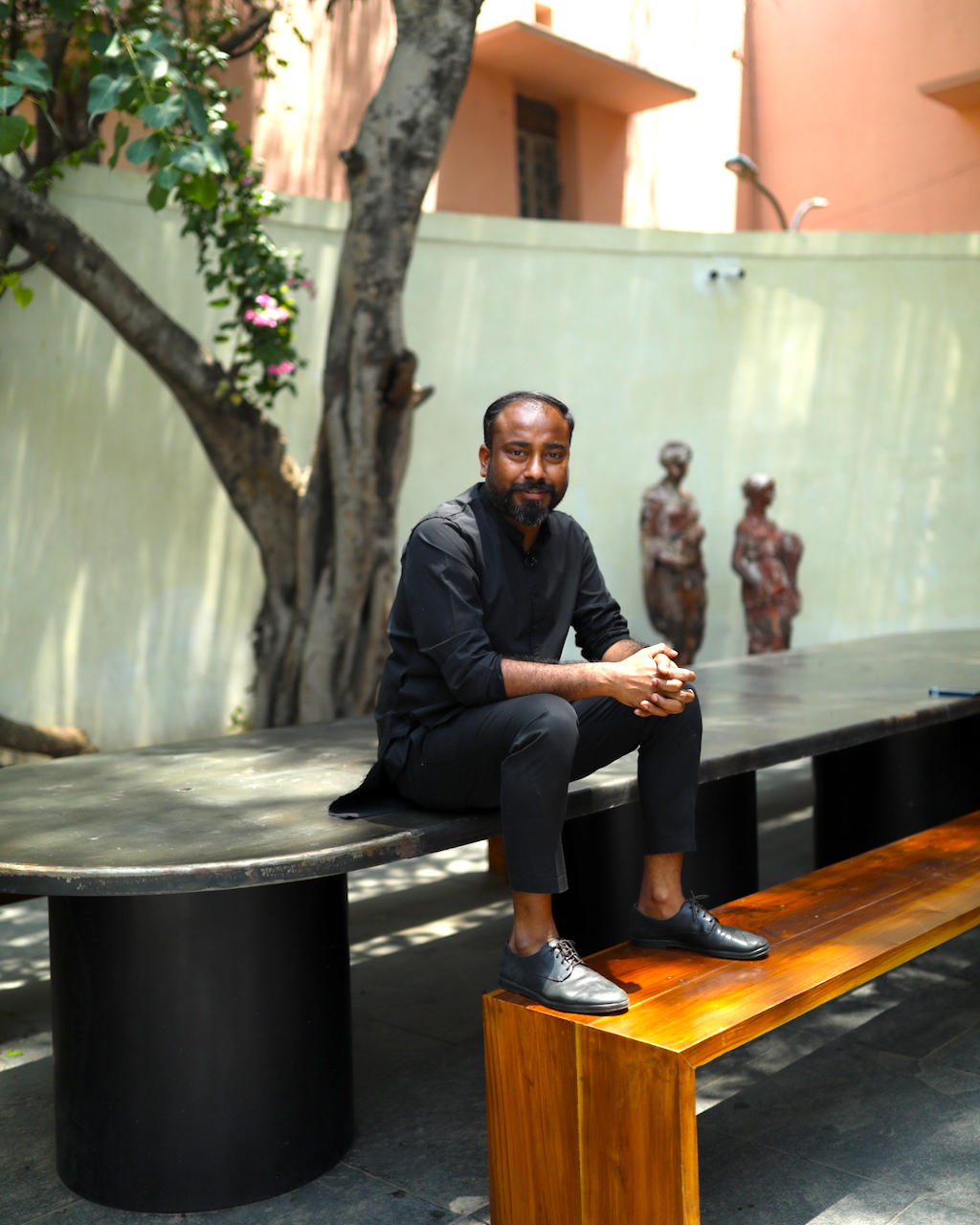
Designer Sanjay Garg’s fresh and modern take on the sari
Delhi-based designer Sanjay Garg is known for marching to his own drum. While other designers explore non-traditional silhouettes, Garg’s label Raw Mango hones in on India’s most iconic garment by updating traditional weaves and patterns – using age-old fabrics like jamdani but tweaking colour and motifs, for example – keeping the sari fresh and modern.
“Blouses, petticoats, the patterns and colours were all frozen in time,” Garg says when explaining why saris came to be seen as dated. According to him, this stagnation is symptomatic of a larger issue: Indian design in general languished during the colonial and post-colonial periods. “Four hundred years ago, Delhi had a robust aesthetic language. The Mughal Empire was on a par with Versailles,” he continues. “The west continued to evolve, but the role of designers in India was negligible after the British arrived. Now, [over 70] years after independence, [the concept of design] is being revived.”
The standard perception is that the sari – in essence, a single long piece of fabric – can be worn only one way and on specific occasions. Garg tosses those rules aside, pointing to a younger generation who are hitching up the hems of their saris to the calf and pairing them with boots or trainers.
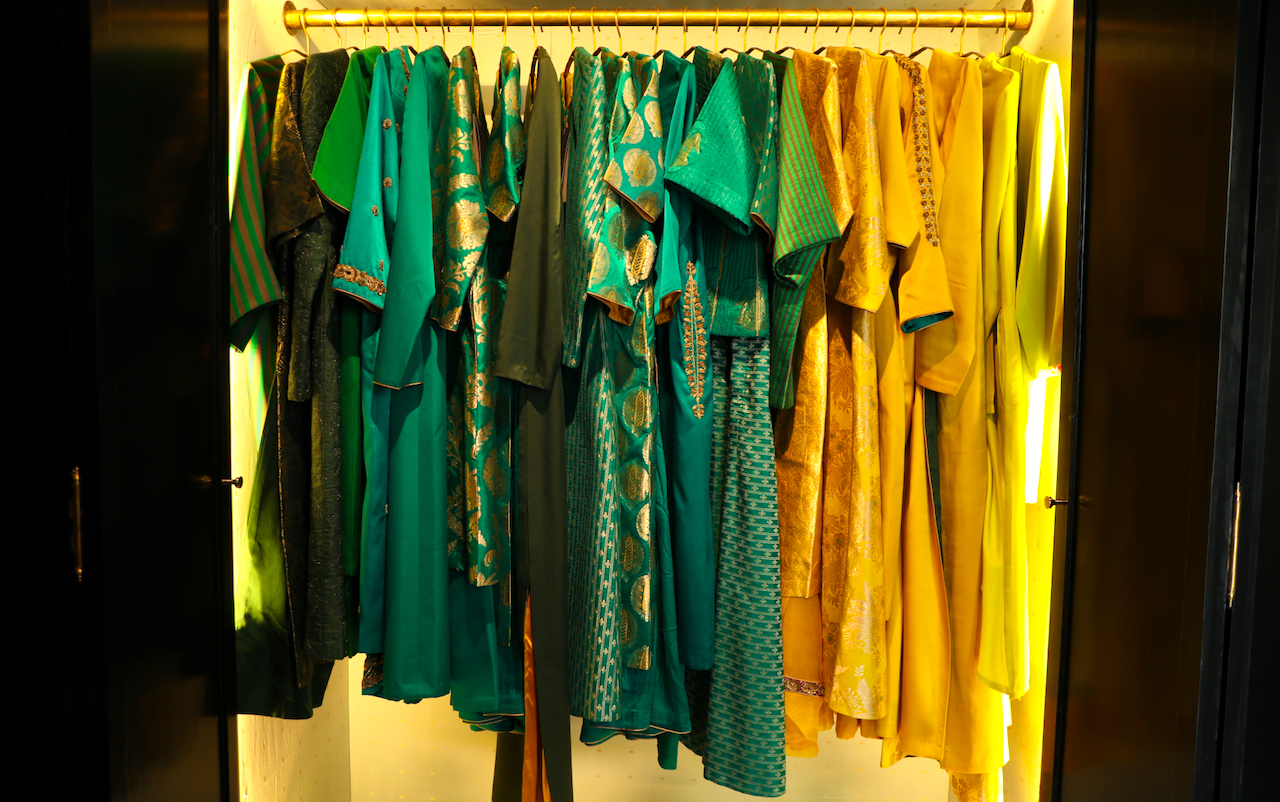
In April 2019, Garg opened a second outpost in the heart of the city, adjacent to Lodhi Colony Market, a petit promenade of whitewashed storefronts housing hip and traditional shops and eateries in the heart of one of Delhi’s poshest districts.
“Clothing, like anything else in India, is tied up with caste, religion, identity… it’s been like that for years”
Unlike typically frenzied sari stores, Garg’s spot is like a Zen retreat amidst the bustle. A discreet arched entryway leads down a tree-lined walk and ends in an all-white sanctuary surrounded with shade-filled courtyards. Inside, Garg’s dreamy saris, tunics and lenghas (long skirts) are tucked inside sleek cupboards and traditional armoires reminiscent of private dressing rooms.
“Clothing, like anything else in India, is tied up with caste, religion, identity,” Garg explains. “It’s been like that for years. Only now are we seeing individuality… and community come into play. That’s exciting.”
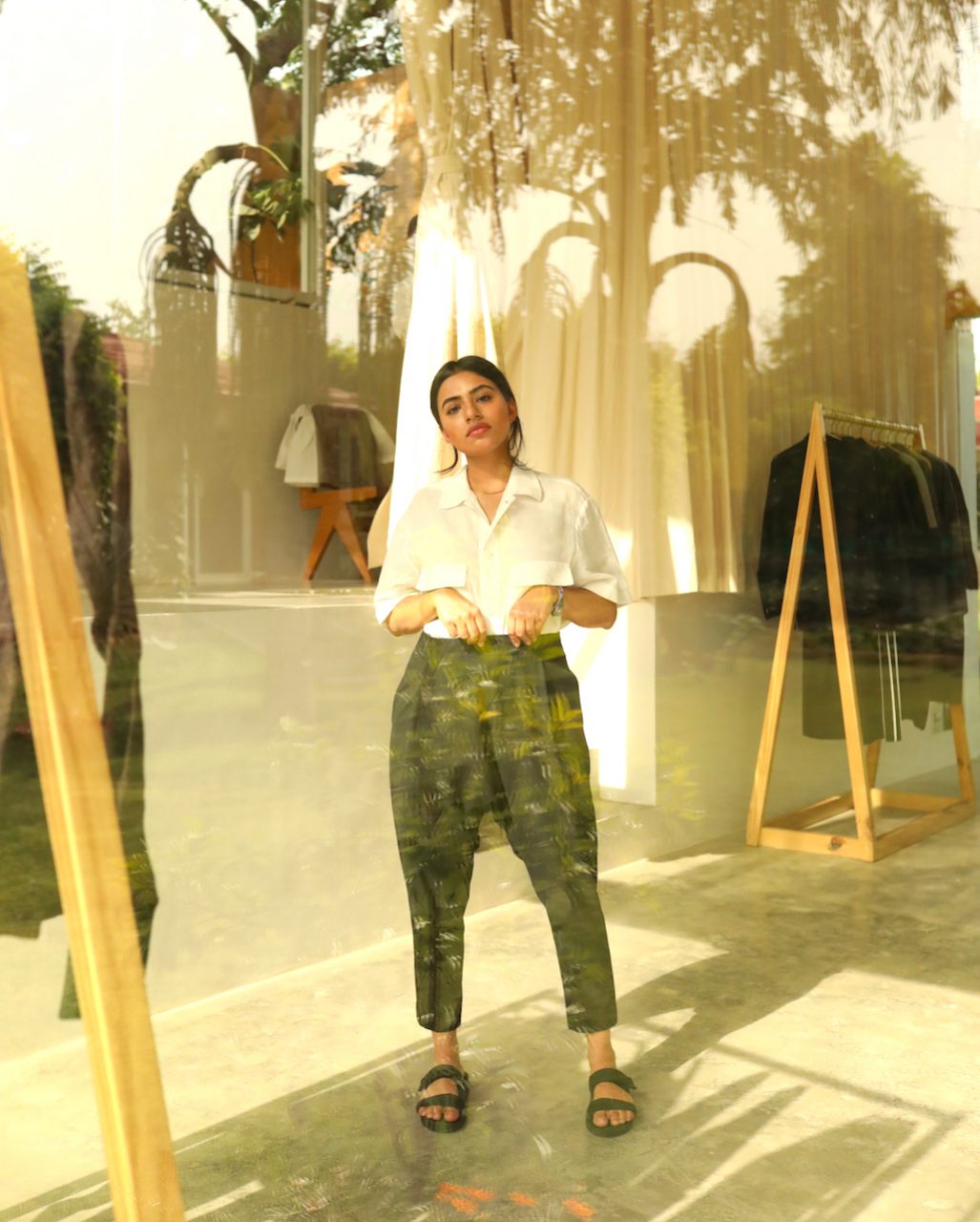
Designer Ruchika Sachdeva creates a modern Indian wardrobe
Fashion designer Ruchika Sachdeva’s label Bodice occupies an upscale address in Vasant Kunj. The lush, tree-lined lawn at Bodice’s farmhouse contains a glass-walled shop, where Sachdeva’s meticulously tailored collections float like ethereal art pieces.
The main house is where patternmakers, tailors and Sachdeva’s energetic assistants carry out her vision for the modern Indian wardrobe: structured tops, skirts, trousers and dresses with trim waists and sharp silhouettes cut from materials such as cotton, linen and all-season wool.
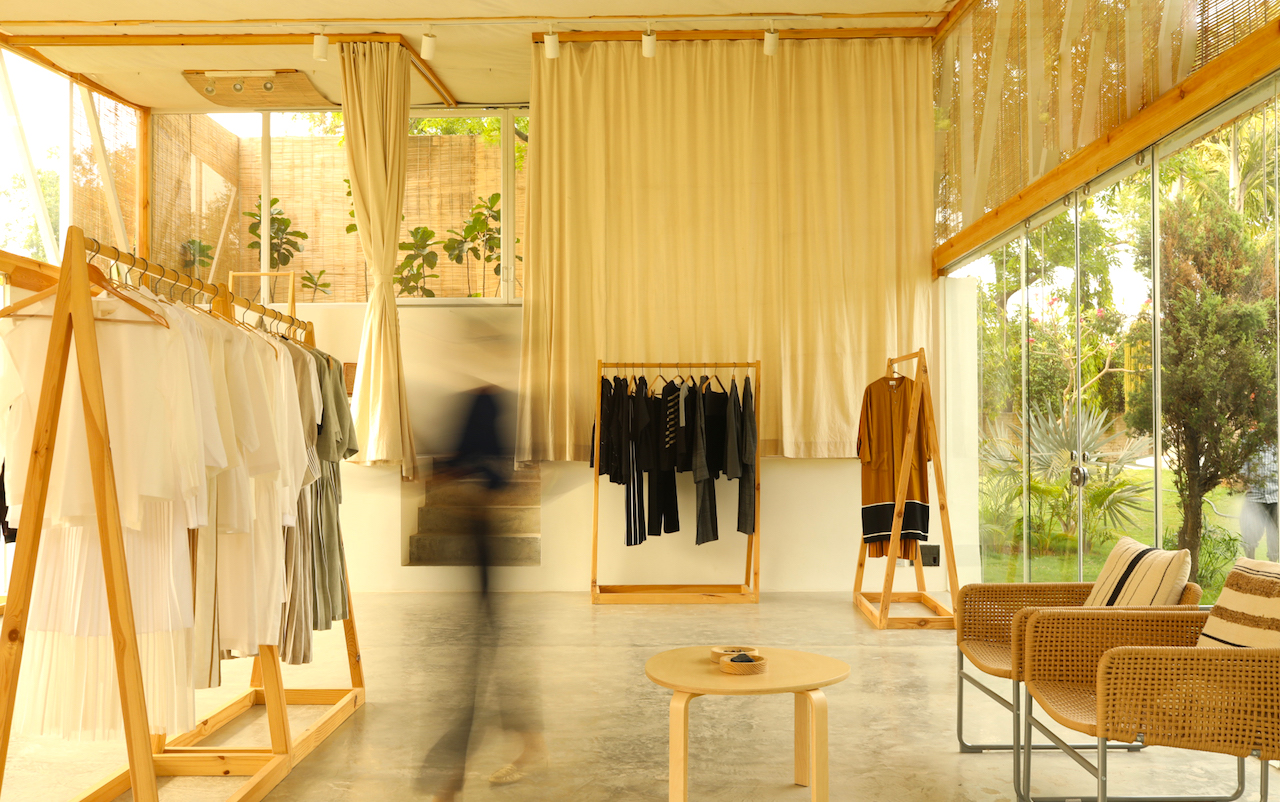
Bodice started out as a tiny studio space deep in the cacophonous warrens of the now-trendy Hauz Khas Village just over 10km away. “It was good to start out there,” the effervescent designer remembers. “Rents were cheap, the vibe was edgy. But it became commercial really fast.”
Dressed simply in a sand-coloured T-shirt and matching culottes, the 30-year-old designer explains how a younger generation of Delhiites is increasingly “fed up with” the pressure to dress to impress or follow Bollywood style fads. “There’s a shift towards cultivating individual style,” she says.
She is chatting to a Finnish banker, a regular client who is picking up a few new pieces, when she has to field a call from the organiser of a Sofar Sounds gig happening at Bodice that evening.“This event brings music, fashion and a cross-section of people together,” says Sachdeva, who gained global recognition when she won the prestigious 2017/18 Woolmark Prize (womenswear) for rising designers. “I would never have been able to do this in my former space.”

Designer Gautam Sinha focuses on detail-oriented craftsmanship
In late 2017, Central Saint Martins, London, graduate Gautam Sinha scoped out the abandoned industrial warehouses at Dhan Mill Compound for his leather craft label Nappa Dori. Located 14km from the city centre in the southern suburbs and admittedly “not on the way to anything”, it was a risky choice for his flagship.
But he jumped in anyway, transforming one of the warehouses into a loft-like creative space with soaring ceilings and spacious displays for his handcrafted leather trunks, buttery soft handbags, screen-printed satchels and sporty leather footwear. An in-house atelier provides room for artisans to cut and sew modern leather accoutrements and acts as a classroom for DIY belt-making workshops using traditional tools and craftsmanship.
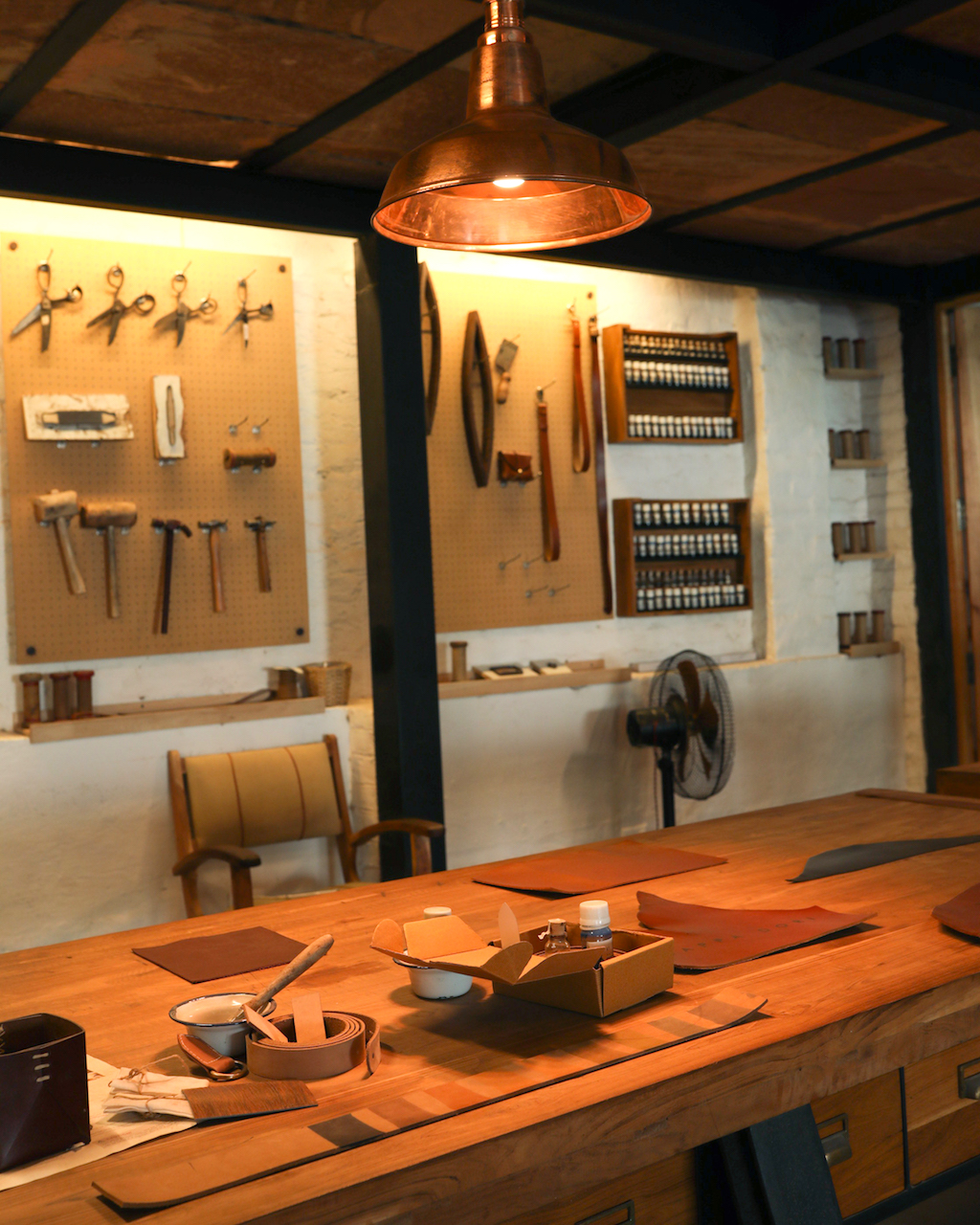
At the in-house Café Dori, Maneet Bedi – the brand’s designer and operations manager – discusses Nappa Dori’s evolution over a fresh lime soda, all while keeping an eye on the brisk lunch crowd as they dive into the eatery’s signature flatbreads and house-made pasta dishes.
“Design [as concept and lifestyle] is a relatively new idea here,” says the soft-spoken 24-year-old Bedi, a creative ingénue who helped Sinha appeal to Delhi’s upwardly mobile millennial shopper. “And not everyone gets it. We wanted to create the [city’s] first retail concept store… where Delhiites [can] explore retail in a different light.” Bedi cites Nappa Dori’s frequent design and lifestyle pop-ups that spotlight new labels and art as one way they’ve tried to loosen the lofty conceptual underpinnings of design to make it more approachable.
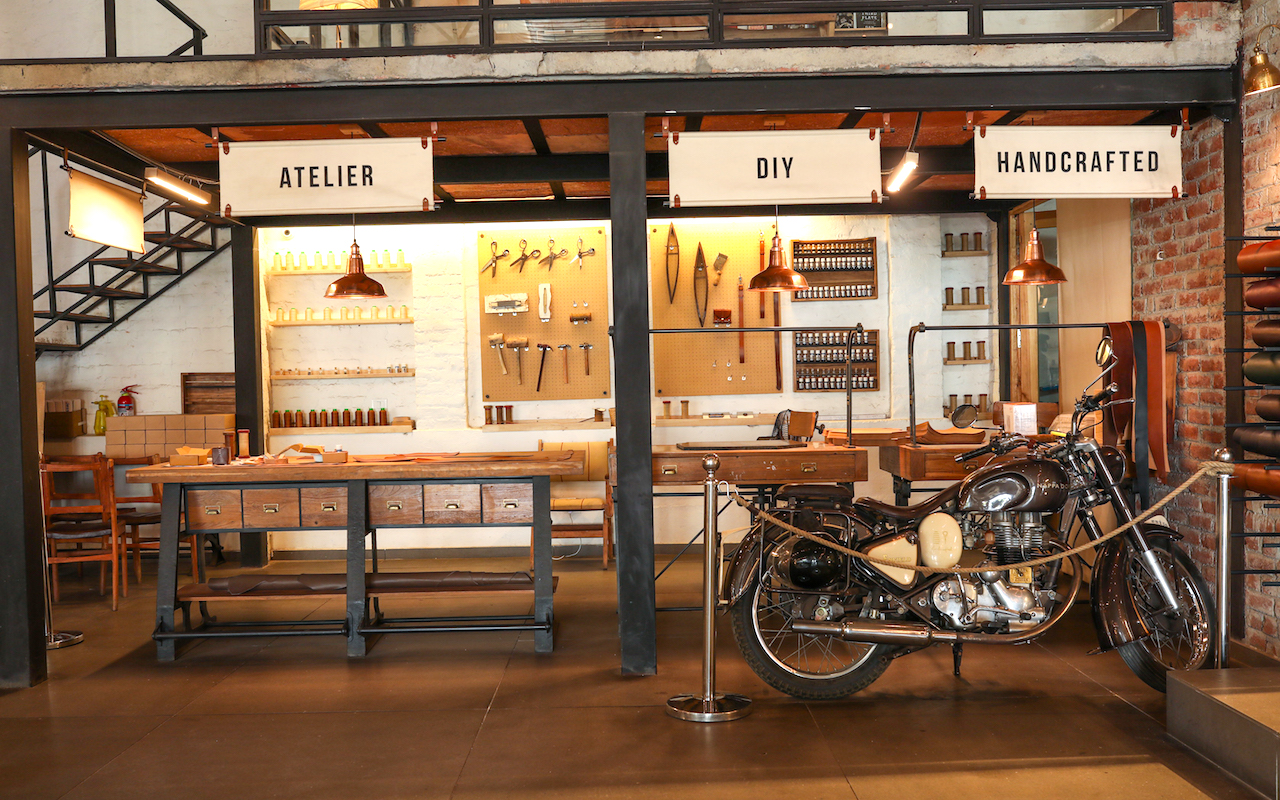
Other designers in the area have since followed Sinha’s lead. Dhan Mill Compound’s former industrial bodegas now house creative spaces, including OddBird Theatre, an independent theatre; Claymen, a ceramic studio; and Motherland, an art and design publishing house, to name a few.
By stepping outside conventional market spaces, Sinha inadvertently jump-started a new type of marketplace, one that hinges on incubating creativity and connections in unexpected places.
Please check the establishments’ respective websites for opening hours as well as booking requirements before visiting, and remember to adhere to safe-distancing measures while out and about.
The information is accurate as of press time. For the latest travel advisory updates, please refer to the Ministry of Foreign Affairs’ website.
To learn more about Singapore Airlines flights, visit singaporeair.com. To join us in protecting the environment by offsetting your carbon emissions on your future flights, visit the following websites to learn more: carbonoffset.singaporeair.com.sg and carbonoffset.flyscoot.com
This article was originally published in the July 2019 issue of SilverKris magazine
The post Top fashion designers in Delhi appeared first on SilverKris.
from SilverKris
No comments:
Post a Comment